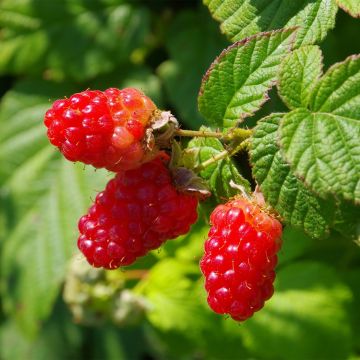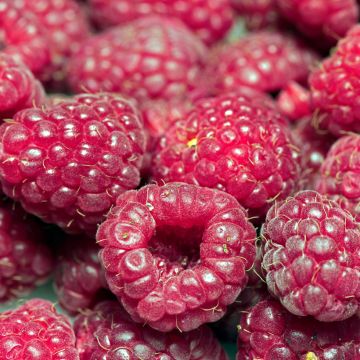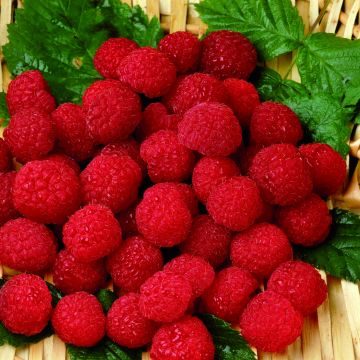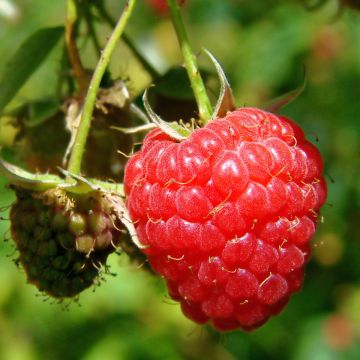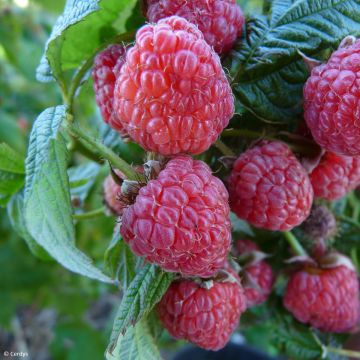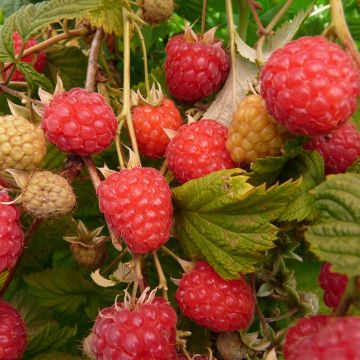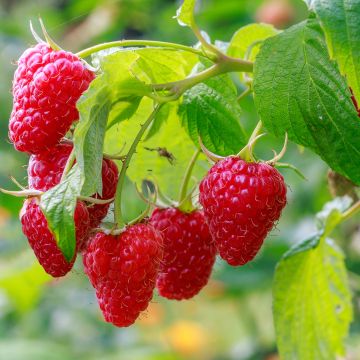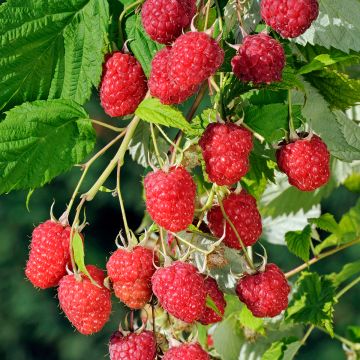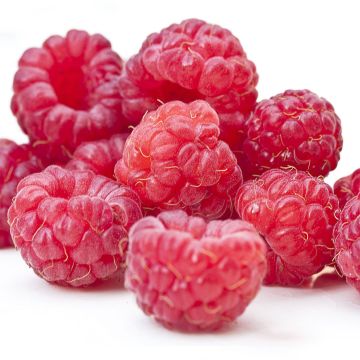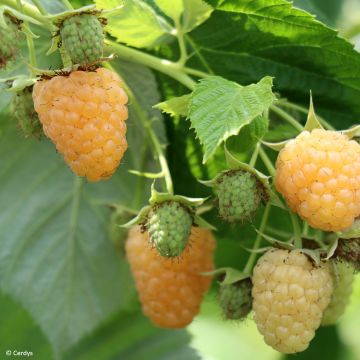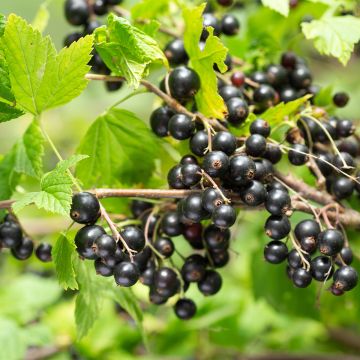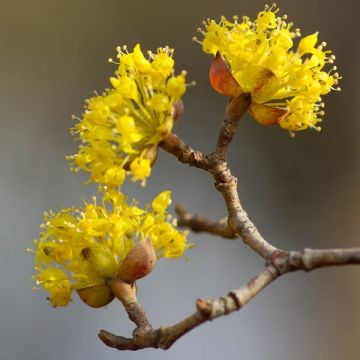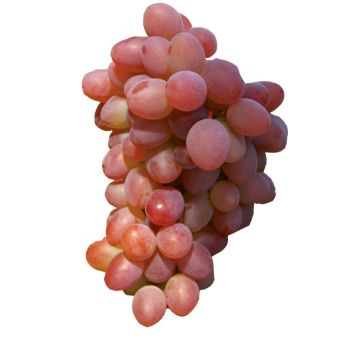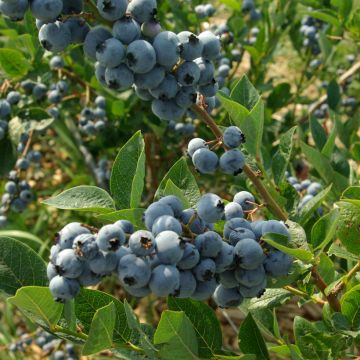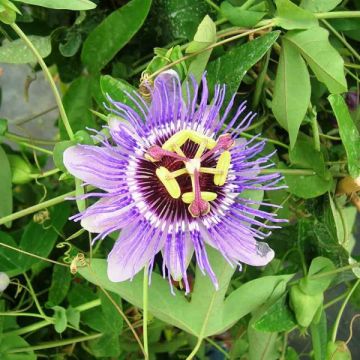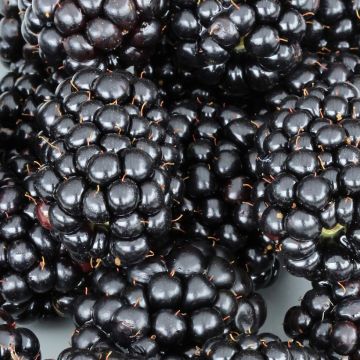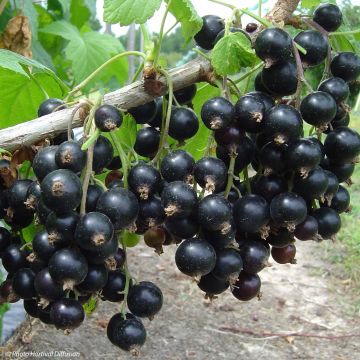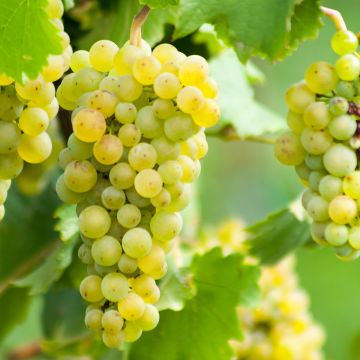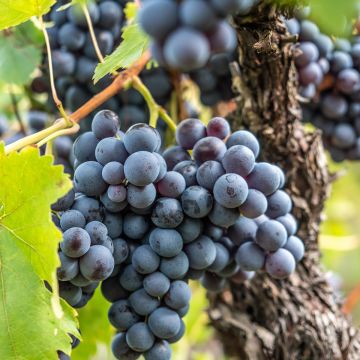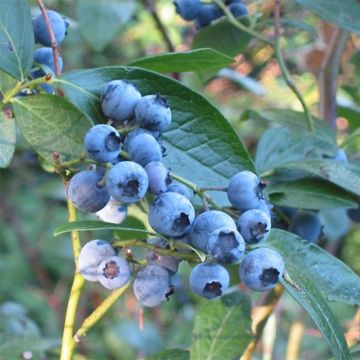

Raspberry Magnific Delbard- Rubus idaeus
Rubus idaeus Magnific Delbard® 'Delmes'
Raspberry, Red Raspberry, European Raspberry
This item cannot be shipped to the selected country
Delivery charge from €5.90
Delivery to Corse prohibited
More information
Schedule delivery date,
and select date in basket
This plant carries a 6 months recovery warranty
More information
We guarantee the quality of our plants for a full growing cycle, and will replace at our expense any plant that fails to recover under normal climatic and planting conditions.
From €5.90 for pickup delivery and €6.90 for home delivery
Express home delivery from €8.90.
Delivery to Corse prohibited: UE law prohibits the import of this plant from mainland France to Corse as part of the fight against Xylella fastidiosa. Please accept our sincere apologies.
More information
Description
The Magnifique Delbard Raspberry is a non-perpetual variety that produces very large (10-12g), dark red, fragrant fruits with an excellent flavour and a good shelf life. With a late harvest in July and August, Magnifique Delbard is resistant to common raspberry diseases and drought. Created by Georges Delbard.
Magnifique Delbard belongs to the Rosaceae family. It is a cousin of blackberries and wild roses. The wild raspberry is native to Europe and temperate Asia, where it grows in cool climates alongside elderberries, beeches, or rowans, especially in mountainous undergrowth but also in lowlands. It is a deciduous bush with upright stems, forming a bush 1.50 m (5ft) in all directions over time. The stems are biennial, each dying after fruiting. It spreads from a perennial sucker crown, which produces new, prickly shoots each year. Its leaves are green on top, white-green and hairy on the underside. The nectar-rich, white flowers are small (1 to 2 cm (up to 1in) in diameter), grouped in small clusters of 10 to 12. The fruits are formed by small clustered drupes, not adhering to the receptacle*, detaching very easily when ripe. Magnifique Delbard fruits abundantly in July and August, when most raspberries take a break. Thus, it can be grown with perpetual varieties like 'Versailles' or 'Golden Everest' (with astonishingly perfumed yellow fruits) to obtain a continuous harvest from June to October and to vary the flavours throughout the season.
The fruits are best consumed fresh, as they do not keep well and should be consumed or processed quickly, for example, into jam. Production reaches its peak in the third year after planting. One plant can produce fruit for around 10 years.
Raspberries can be used to make jam or to garnish pies. The cultivation of raspberries seems to date back to the end of the Middle Ages. In forests, five to ten years after cutting down beech trees in particular, wild raspberries appear in the vacant space created and produce fruit for three to four years. Raspberries are low in energy, containing two specific sugars, levulose and fructose, and very little sucrose. The fruits also contain ellagic acid, tannins and vitamin C, and are a good source of potassium. It is also a medicinal plant.
*This non-adherence is a distinguishing criterion between raspberries and blackberries (including Rubus fruticosus, our European blackberry) whose receptacle remains on the fruit.
Report an error about the product description
Raspberry Magnific Delbard- Rubus idaeus in pictures
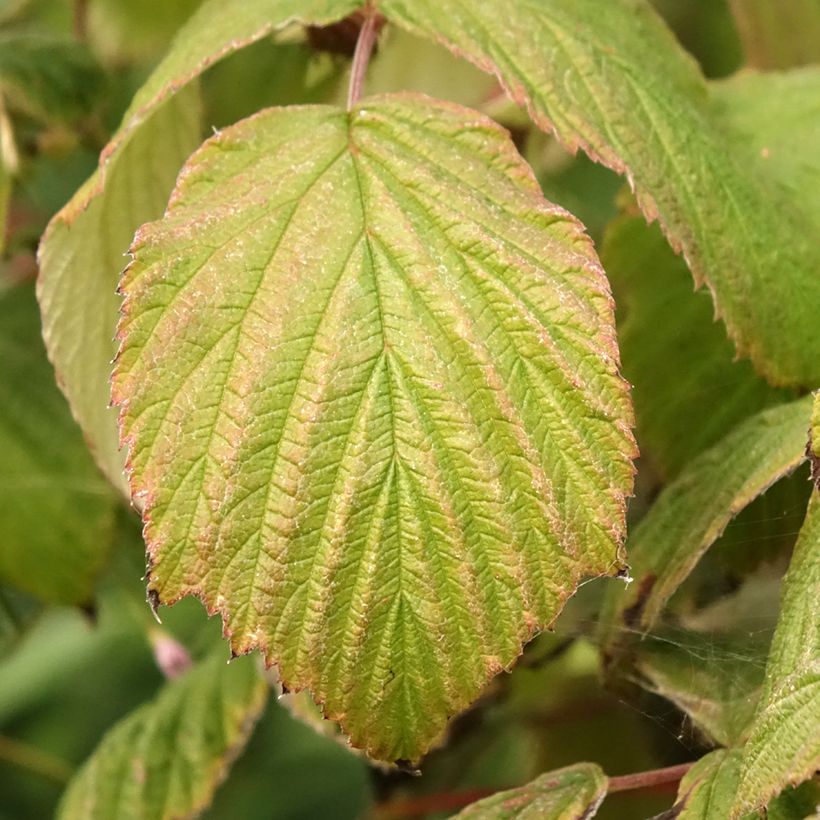

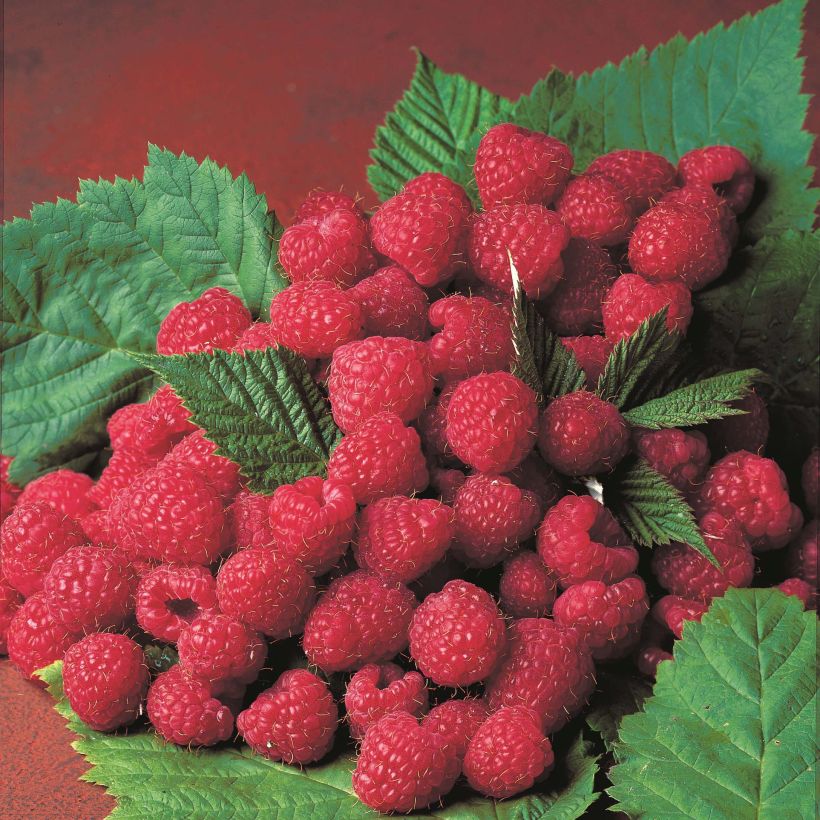

Plant habit
Fruit
Flowering
Foliage
Botanical data
Rubus
idaeus
Magnific Delbard® 'Delmes'
Rosaceae
Raspberry, Red Raspberry, European Raspberry
Cultivar or hybrid
Other Raspberry plants
Planting and care
Raspberry plants prefer humus-rich soils that retain moisture, even in summer, without too much limestone, and appreciate partially shaded but bright exposures.
In the north, it will tolerate full sun while in the south, it prefers partial shade. Plant it from November to March in ordinary soil enriched with compost and well-rotted manure. Water regularly to promote root development in the first year of planting. During periods of high heat or prolonged drought, provide it with additional water. Raspberry plants can be susceptible to various diseases if the growing conditions are not optimal (raspberry anthracnose, raspberry rust, powdery mildew, grey mould during rainy periods or Botrytis).
The damage is due to adverse climatic conditions, especially during cold springs that allow micro-fungi present in the soil to infest the vegetation. To protect the plants, feed with organic fertilisers that promote the multiplication of anaerobic bacteria in the soil, and strengthen the soil's ability to stimulate the plants' immune system. Raspberries can also be attacked by parasites such as raspberry worms, the larvae of a small beetle that lodges itself in the fruits, without causing significant damage.
Planting period
Intended location
Care
-
, onOrder confirmed
Reply from on Promesse de fleurs
Berries
Haven't found what you were looking for?
Hardiness is the lowest winter temperature a plant can endure without suffering serious damage or even dying. However, hardiness is affected by location (a sheltered area, such as a patio), protection (winter cover) and soil type (hardiness is improved by well-drained soil).

Photo Sharing Terms & Conditions
In order to encourage gardeners to interact and share their experiences, Promesse de fleurs offers various media enabling content to be uploaded onto its Site - in particular via the ‘Photo sharing’ module.
The User agrees to refrain from:
- Posting any content that is illegal, prejudicial, insulting, racist, inciteful to hatred, revisionist, contrary to public decency, that infringes on privacy or on the privacy rights of third parties, in particular the publicity rights of persons and goods, intellectual property rights, or the right to privacy.
- Submitting content on behalf of a third party;
- Impersonate the identity of a third party and/or publish any personal information about a third party;
In general, the User undertakes to refrain from any unethical behaviour.
All Content (in particular text, comments, files, images, photos, videos, creative works, etc.), which may be subject to property or intellectual property rights, image or other private rights, shall remain the property of the User, subject to the limited rights granted by the terms of the licence granted by Promesse de fleurs as stated below. Users are at liberty to publish or not to publish such Content on the Site, notably via the ‘Photo Sharing’ facility, and accept that this Content shall be made public and freely accessible, notably on the Internet.
Users further acknowledge, undertake to have ,and guarantee that they hold all necessary rights and permissions to publish such material on the Site, in particular with regard to the legislation in force pertaining to any privacy, property, intellectual property, image, or contractual rights, or rights of any other nature. By publishing such Content on the Site, Users acknowledge accepting full liability as publishers of the Content within the meaning of the law, and grant Promesse de fleurs, free of charge, an inclusive, worldwide licence for the said Content for the entire duration of its publication, including all reproduction, representation, up/downloading, displaying, performing, transmission, and storage rights.
Users also grant permission for their name to be linked to the Content and accept that this link may not always be made available.
By engaging in posting material, Users consent to their Content becoming automatically accessible on the Internet, in particular on other sites and/or blogs and/or web pages of the Promesse de fleurs site, including in particular social pages and the Promesse de fleurs catalogue.
Users may secure the removal of entrusted content free of charge by issuing a simple request via our contact form.
The flowering period indicated on our website applies to countries and regions located in USDA zone 8 (France, the United Kingdom, Ireland, the Netherlands, etc.)
It will vary according to where you live:
- In zones 9 to 10 (Italy, Spain, Greece, etc.), flowering will occur about 2 to 4 weeks earlier.
- In zones 6 to 7 (Germany, Poland, Slovenia, and lower mountainous regions), flowering will be delayed by 2 to 3 weeks.
- In zone 5 (Central Europe, Scandinavia), blooming will be delayed by 3 to 5 weeks.
In temperate climates, pruning of spring-flowering shrubs (forsythia, spireas, etc.) should be done just after flowering.
Pruning of summer-flowering shrubs (Indian Lilac, Perovskia, etc.) can be done in winter or spring.
In cold regions as well as with frost-sensitive plants, avoid pruning too early when severe frosts may still occur.
The planting period indicated on our website applies to countries and regions located in USDA zone 8 (France, United Kingdom, Ireland, Netherlands).
It will vary according to where you live:
- In Mediterranean zones (Marseille, Madrid, Milan, etc.), autumn and winter are the best planting periods.
- In continental zones (Strasbourg, Munich, Vienna, etc.), delay planting by 2 to 3 weeks in spring and bring it forward by 2 to 4 weeks in autumn.
- In mountainous regions (the Alps, Pyrenees, Carpathians, etc.), it is best to plant in late spring (May-June) or late summer (August-September).
The harvesting period indicated on our website applies to countries and regions in USDA zone 8 (France, England, Ireland, the Netherlands).
In colder areas (Scandinavia, Poland, Austria...) fruit and vegetable harvests are likely to be delayed by 3-4 weeks.
In warmer areas (Italy, Spain, Greece, etc.), harvesting will probably take place earlier, depending on weather conditions.
The sowing periods indicated on our website apply to countries and regions within USDA Zone 8 (France, UK, Ireland, Netherlands).
In colder areas (Scandinavia, Poland, Austria...), delay any outdoor sowing by 3-4 weeks, or sow under glass.
In warmer climes (Italy, Spain, Greece, etc.), bring outdoor sowing forward by a few weeks.

































